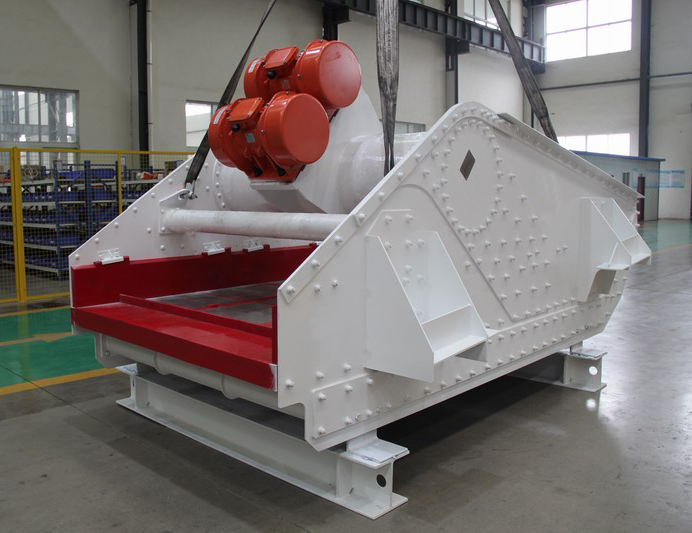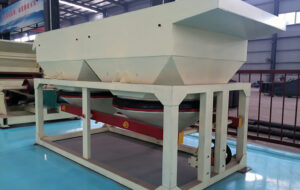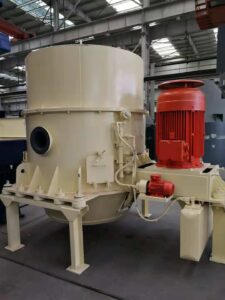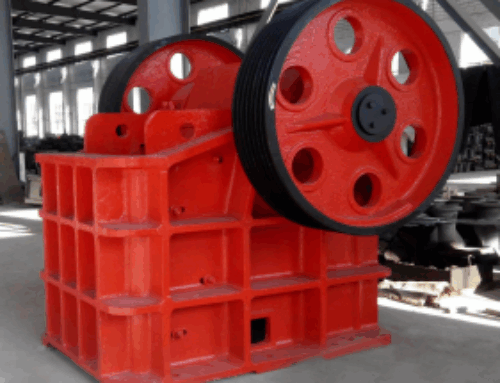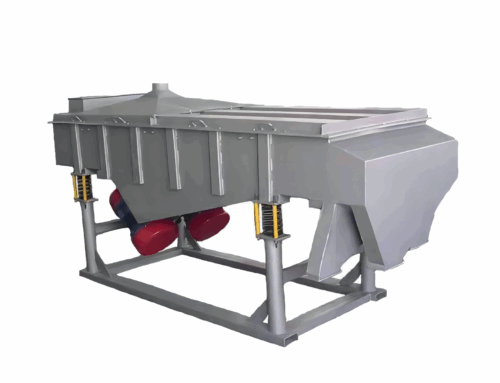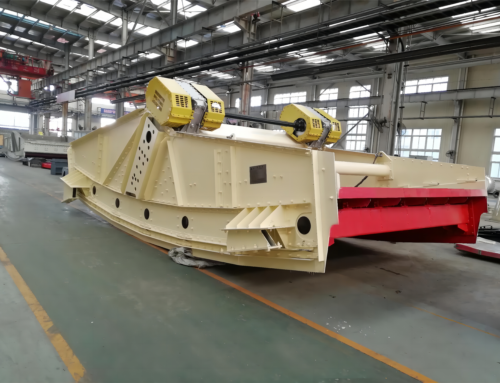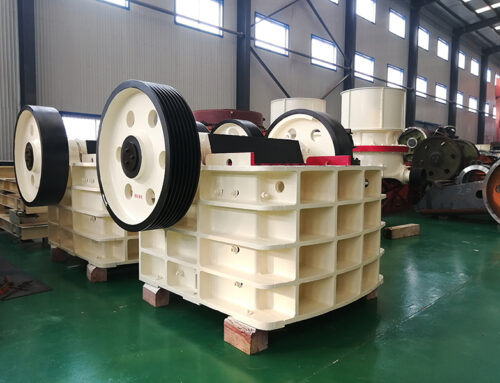Coal, as an important fossil energy source, occupies a pivotal position in the global energy structure. For a long time, coal has provided solid energy security for industrial production, power supply and residential heating by virtue of its abundant reserves, wide distribution and relatively low cost. Especially in some developing countries, coal is a key energy source to support economic development.
In recent years, with the rapid development of the global economy and the continuous growth of energy demand, the contradiction between the limited coal resources and the increasing energy demand has become more and more prominent. At the same time, the environmental pollution problems brought about by coal in the process of mining, transport, processing and utilisation, such as air pollution, water pollution and soil pollution, have also attracted widespread attention. The irrational use of coal not only causes serious damage to the ecological environment, but also threatens human health and sustainable development. Therefore, the rational use of coal resources, improve the efficiency of coal utilisation and reduce environmental pollution has become an important issue facing the global energy field at present. This is not only related to the sustainable supply of energy, but also to the protection of the ecological environment and the sustainable development of human society.
一.Analysis of the current situation of coal resources utilisation
1.Basic national conditions of China’s coal resources
China has rich coal reserves, which is one of the countries with the largest coal reserves in the world. In recent years, China’s coal production has been maintained at a high level, and coal has always occupied a dominant position in the energy structure. In the industrial field, coal is an important energy source and raw material for the iron and steel, chemical and building materials industries. In iron and steel production, coal is transformed into coke through coking, which provides heat source and reductant for iron making in blast furnace, and is an indispensable raw material for iron and steel production. In the chemical industry, coal can be used to produce basic chemical products such as synthetic ammonia and methanol, which in turn extends numerous downstream chemical products and supports the development of the chemical industry. In the electric power industry, thermal power generation is still the main mode of power generation in China, and coal occupies an absolutely dominant position in the fuel for thermal power generation, providing a stable guarantee for China’s power supply.
2.Existing Utilisation Methods and Problems Insight
Traditional Utilisation Methods
For a long time, coal thermal power generation has been one of the main ways of power supply in China. By burning coal, water is heated into high-temperature and high-pressure steam, which pushes the turbine to rotate and then drives the generator to generate electricity. In many large-scale thermal power plants, large amounts of coal are consumed to meet the growing demand for electricity.
In the industrial sector, coal combustion in industrial boilers is widely used. Numerous factories use the steam generated by industrial boilers for production and processing, such as textile factories that use steam to shape and print cloth, and paper mills that use steam to cook raw materials. In addition, coal also plays an important role in civil heating, especially in the northern part of China, where coal is indispensable for winter heating. In some small towns and rural areas, residents burn coal to heat their homes against the cold.
Inefficiency and Waste
In the process of mining coal resources in China, the low mine recovery rate is a prominent problem. Some coal mines have abandoned a large amount of coal resources in the mines due to backward mining technology and poor management. The recovery rate of some small coal mines is even less than 30 per cent, which is a big gap compared with the international advanced level. This not only causes a great waste of coal resources, but also shortens the service life of coal mines.
There are also inefficiencies in coal processing and transformation. Coal washing is an important means to improve coal quality and reduce pollution, but some of China’s coal washing plants have outdated equipment, backward technology, and insufficient coal washing and processing capacity, resulting in a large amount of raw coal directly into the market without washing, reducing the efficiency of coal utilisation. Meanwhile, the energy conversion efficiency of coal in the process of transforming it into electricity, coke and other products needs to be improved, resulting in certain energy losses.
Environmental and Social Challenges
Coal mining has caused extremely serious damage to the ecological environment. In terms of surface subsidence, the excavation of underground coal seams during coal mining has led to large-scale surface collapse. In Shanxi Province, the surface subsidence caused by coal mining has reached thousands of square kilometres, cracking houses in many villages and rendering farmland uncultivable, seriously affecting the lives of local residents and agricultural production.
With regard to the destruction of land resources, the accumulation of large quantities of coal gangue generated by coal mining has occupied a large amount of land. These coal gangue not only occupies land, but may also spontaneously combust, releasing harmful gases and polluting the atmospheric environment.
The process of coal combustion emits a large number of pollutants, such as sulphur dioxide, nitrogen oxides and soot, which are one of the major sources of air pollution. These pollutants form acid rain, which causes serious harm to soil, water bodies and vegetation. In some coal-producing areas in China, the problem of acid rain is more prominent due to the long-term and massive burning of coal, which has led to a reduction in crop yields and damage to forests. At the same time, greenhouse gases such as carbon dioxide emitted by coal combustion are one of the important factors of global warming.
二.Strategies to enhance coal energy utilisation efficiency
Coal and new energy sources such as solar energy, wind energy and hydro energy are highly complementary, and the development of a multi-energy synergistic utilisation model is an important way to improve the efficiency of energy utilisation and promote the sustainable development of energy.
Solar photovoltaic power generation has the advantages of being clean and renewable, but it is greatly affected by day and night, weather and other factors, and power generation is intermittent and unstable. Coal power generation, on the other hand, can provide stable power output to make up for the shortcomings of solar power generation. In some areas, ‘wind, fire and storage’ integration projects have been built, combining solar and wind power generation with coal-fired power generation, and equipped with energy storage systems. During the daytime when there is sufficient sunlight and strong winds, solar photovoltaic power stations and wind farms generate electricity at full capacity, and in addition to meeting the local demand for electricity, the excess electricity is stored in the energy storage system; when the night or the weather is not good, and solar and wind power generation is insufficient, coal-fired power generation is initiated, while the storage system releases the electricity, which works together to ensure a stable supply of electricity.
In areas rich in hydropower resources, the synergy between hydropower and coal power generation is also very important. Hydropower has the characteristics of rapid start and stop, flexible regulation, in the abundant water period, the hydropower station can generate a large amount of power to meet the social demand for electricity, reducing the pressure of coal power generation; in the dry season, hydropower generation is reduced, and coal power generation plays a major role in ensuring the stability of power supply. Through this optimal scheduling of hydropower and thermal power, the rational allocation of energy resources is achieved and the overall efficiency of energy use is improved.
In addition, multi-energy co-generation, energy storage and other synergistic utilisation modes can also bring significant economic and environmental benefits. By optimising the energy structure, the dependence on a single coal resource is reduced, and the risk of energy supply is lowered. At the same time, the reduced use of coal reduces the emission of pollutants, which is conducive to environmental protection.
三.Comprehensive Utilisation of Coal Gangue and Coal Derivatives
Coal gangue as a solid waste generated during the coal mining and washing process, a large number of long-term accumulation, not only occupy land resources, but also cause serious pollution to the environment. However, through a series of comprehensive utilisation pathways, coal gangue can be turned into treasure and realise the recycling of resources.
In the field of building materials, gangue brick-making technology has been more mature. Without spontaneous combustion of gangue by crushing, homogenisation and other pre-treatment, can be used as ingredients for brick making. Gangue bricks have the advantages of high strength, good thermal insulation properties, and in the firing process, the gangue contained in the organic matter can be spontaneous combustion to provide part of the heat, saving raw material coal. China’s annual production of gangue bricks about 13 billion, widely used in various types of construction projects. In addition, gangue can also be used to produce cement. The gangue and limestone, clay and other raw materials according to a certain proportion of mixing, grinding, calcining and other processes, can be made into cement clinker, and then add an appropriate amount of gypsum and other mixed materials grinding, you can get cement products. The use of coal gangue production of cement, not only can consume a lot of gangue, but also reduce the cost of cement production.
In the mine backfill, the use of coal gangue backfill mine hollow area has a multi-purpose effect. On the one hand, it can effectively reduce the amount of coal gangue ground accumulation, reduce the occupation of land and environmental pollution; on the other hand, it can support the roof of the mine, reduce the surface subsidence, and protect the safe production of the mine.
Coal gas is a combustible gas produced in the process of coal gasification or combustion, and its main components include hydrogen, carbon monoxide, methane and so on. After purification, coal gas can be widely used in industrial and civil fields. In industry, it can be used as fuel for heating furnace, boiler and other equipments, and can also be used as chemical raw material for the production of synthetic ammonia, methanol and other products. In civil use, gas can be used as residential gas, which is convenient and relatively clean.

